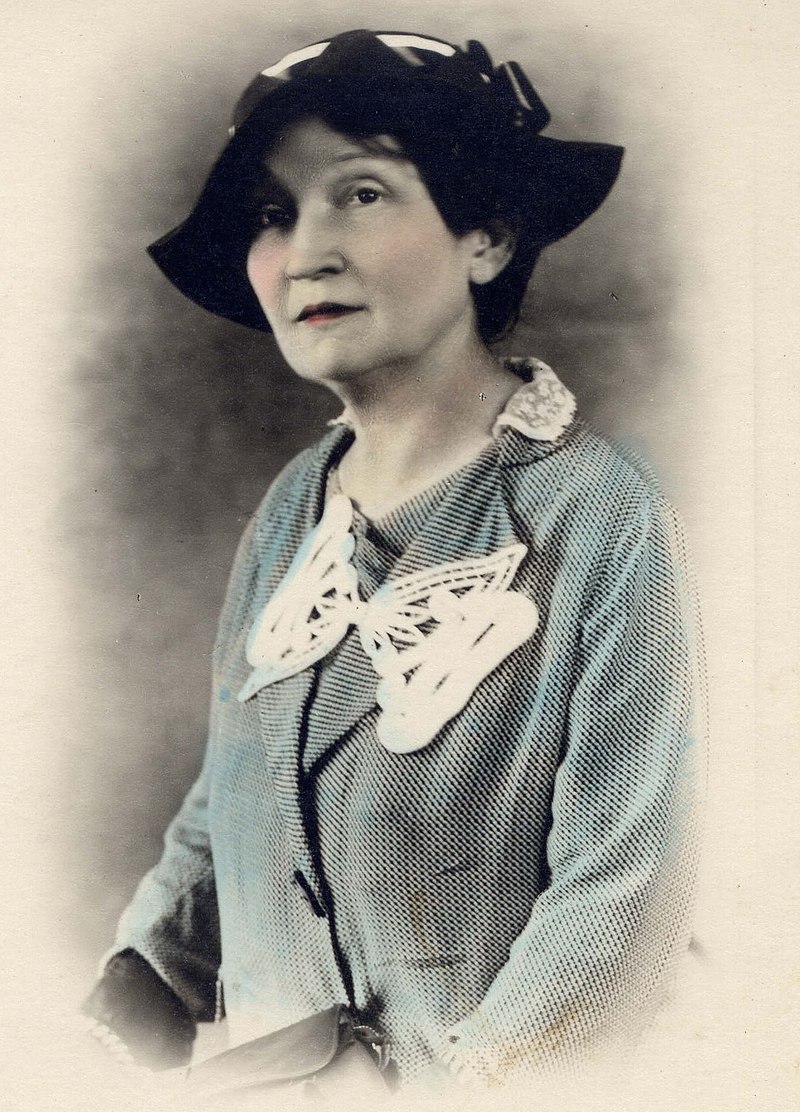Belović Bernadžikovska, Jelica (1870 - 1946)
Last edited by Alicia_Montoya on Nov. 16, 2024, 11:41 a.m.
| Short name | Belović Bernadžikovska, Jelica |
|---|---|
| VIAF | http://viaf.org/viaf/74227583/ |
| First name | Jelica |
| Birth name | Belović Bernadžikovska |
| Married name | |
| Alternative name | Mlada Gospoja Ana — Jele — Ljuba T. Daničić — Teta Jelica — Jelica — Hele — LJuba T. Daničić — Jasna |
| Date of birth | 1870 |
| Date of death | 1946 |
| Flourishing | - |
| Sex | Female |
| Place of birth | Osijek |
| Place of death | Novi Sad |
| Lived in | Serbia |
| Place of residence notes |
| Mother | |
|---|---|
| Father | |
| Children | |
| Religion / ideology | Eastern Orthodox |
| Education | School education |
| Aristocratic title | - |
| Professional or ecclesiastical title | - |
| Profession(s) | |
|---|---|
| Memberships | |
| Place(s) of Residence | Serbia |
Author of
Editor of
-Copyist of
-Illustrator of
-Translator of
-Circulations of Belović Bernadžikovska, Jelica, the person (for circulations of her works, see under each individual Work)
| Title | Date | Type |
Receptions of Belović Bernadžikovska, Jelica, the person
For receptions of her works, see under each individual Work.
MENTIONED IN: - Celia Hawkesworth, Voices in the shadows: women and verbal art in Serbia and Bosnia, 2000. - Biljana Dojčinović, GendeRingS. "Gendered ReadingS in Serbian Women's Writing". Beograd, 2006 - Magdalena Koch "...kiedy dojrzejemy jako kulturam...", 2007. Cf. - article about her in Serbian woman: her life and work, her cultural development and her folklore art up to date, edited by Serbian woman writers 1913, Srpkinja: njezin život i rad, njezin kulturni razvitak i njezina narodna umetnost do danas, 1913. - Biljana Dojčinović - "O ženama i književnosti na početku veka" in Ženske studije, 11-12, 2000. str. 23-33; "On Women and Literature at the Beginnig of XX Century", in Women's Studies, no 11-12, 2000, pg. 23-33
Jelica Belović-Bernadzikowska, ethnographer, teacher and writer, was born in 1870 in Osijek, nowadays Croatia, then Austro-Hungary. Her father was Serbian, her mother German, and she was married to a Polish official. Her main political idea was the union of Croats and Serbs, and this resulted in her being frequently maltreated by the representatives of Austro-Hungarian administration. Her life, however, did not get any better after the World War One, when Yugoslavia, the Kingdom of Serbs, Croats and Slovenians, was constituted. Belović -Bernadzikowska lost both her husband and the house during the war, and, no matter she had all these cultural accomplishments, lived with her son in poverty. Her work was much better acknowledged and praised outside her country thаn at home.
She was educated in Osijek, Đakovo, Zagreb, Vienna, Paris, and worked as a teacher in Zagreb, Ruma, Osijek, Mostar, Sarajevo. All her public work was aimed at affirmation of the culture of Southern Slavs and, especially, of women‘s efforts. After 1918, when the Kingdom of Serbs, Croats and Slovenes (as of 1929 - Kingdom of Yugoslavia) was formed, she lived in Bosnia, Croatia and Serbia. Belović-Bernadzikowska published works of fiction, as well as research works and essays on embroidery, education, culture, psychology, pedagogy in Serbian, Croatian and German. In her own autobiographical text from 1936 she noted that she had written 48 books. In addition to that, there is a great number of articles. The most renown is her cooperation with the famous folklorist and sexologist, Friedrich Salomo Krauss in his yearly magazine Anthropophyteia (published in Leipzig 1904-1913). Jelica Belović-Bernadzikowska established or helped establishing ethnographic museums and exhibitions in Zagreb, Vienna, Belgrade, Prague… Her famous book is on the cultural history of South Slavs, Die Sitten der Suedslawen, published in Dresden in German language in 1927.
Dr Tihomir Ostojić (1865- 1921), historian, praised her work by comparing it to canonical and iconical figures of Serbian science and art, Jovan Cvijić and Vuk Karadžić.
jm sep 10
NOT MENTIONED IN:
- Buck, Guide to women's literature, 1992
translated from which language ??? svdmar12
